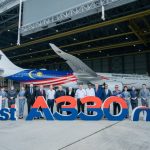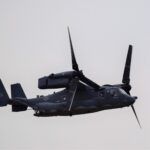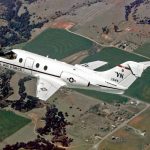At the Paris Air Show, ZeroAvia, a company specialising in the development of sustainable solutions for commercial aviation, announced that it has identified «clear applications for hydrogen-electric, zero-emission propulsion for regional jet aircraft».
According to the company, the initial technical study carried out over the last year together with MHIRJ, the type certificate holder for the type, demonstrated the feasibility of equipping a CRJ700 with the ZA2000 hybrid-electric powerplant, developed by ZeroAvia for aircraft with between forty and eighty seats.
See also: ZeroAvia finalises agreements to enable low-emission flights in Sweden
The feasibility of a CRJ powered by ZeroAvia’s ZA2000 power plant
The analyses considered the maximum take-off weight, the centre of gravity and the structural trade-offs required to carry out the retrofit. According to ZeroAvia, the results also validate the change for other aircraft currently in service, such as the CRJ550 and the CRJ900.
«The study identified good opportunities for onboard hydrogen fuel storage and powertrain integration to ensure preservation of aircraft aerodynamic», said ZeroAvia. It also stressed that the technology would reduce operating costs and thus create new possibilities for the development of airline networks.
«The technical assessment identified that the loss of turbine core thrust could be overcome within the constraints of the original airframe with increased fan diameter, while further efficiency gains were possible by adopting novel propulsor technologies such as geared, ducted electric fan or open rotor designs», the company explained.
«At this early stage in our work together, to already see a viable pathway to clean propulsion with CRJ aircraft should be absolutely thrilling to everybody who wants us to keep flying», said Val Miftakhov, CEO of ZeroAvia. «There is some payload and range compromise, but this technical study confirms a viable propulsion architecture and integration which could be utterly transformational», he added.
In addition, Miftakhov remarked that the first aircraft equipped with this type of propulsion could enter commercial service before the end of this decade.
«MHIRJ is proud to work with ZeroAvia and to have completed the initial study to determine the viability of hydrogen propulsion on a regional jet», said Hiro Yamamoto, CEO of MHIRJ. «Confirming that hydrogen-electric propulsion could work for an aircraft like the CRJ is a great step forward towards the decarbonization of regional flying», he concluded.
See also: Netherlands: ZeroAvia and Shell to work towards enabling hydrogen-powered flights by 2025
The ZA2000 power plant
An adapted CRJ700 would be equipped with two hydrogen-powered engines that would allow it to largely maintain the performance and features of the traditional model. According to ZeroAvia, it will be able to carry sixty passengers with a range of up to 560 nautical miles (almost 1.040 kilometres).
The ZA2000 power plant will have a power output of between 2 and 5 megawatts. A prototype will soon be tested on a 76-seat Dash 8-400. If all goes according to plan, it could be certified in 2027. The development process will be crucial for its future intensive application in regional jets.














